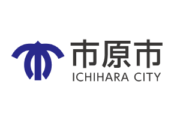Ichihara City Simplifies Microsoft SharePoint Permissions Management for 2,250 Users with DocAve
Success Highlights
Automated permissions management for 2,250 users with the ability to implement changes in bulk, reducing the burden on IT
Ensured organizational governance policies were met, with the ability to automatically revert out-of-policy changes in real time
Generated usage reports to monitor performance and make informed decisions


Location Japan
Industry Public Sector
Platform Windows Server 2012, SharePoint Server 2013, SQL Server 2014
Critical Needs
- Implementation of SharePoint document management functionality to increase information findability and overall productivity
- Creation of new employee search system based on employee profile information using SharePoint’s People Search
- Improved operational design to accelerate SharePoint end user adoption
AvePoint stepped in and filled in the missing piece of the puzzle to make our collaboration vision complete.
Daisuke Koda
Information System Group Lead, Ichihara City
Information System Group Lead, Ichihara City
